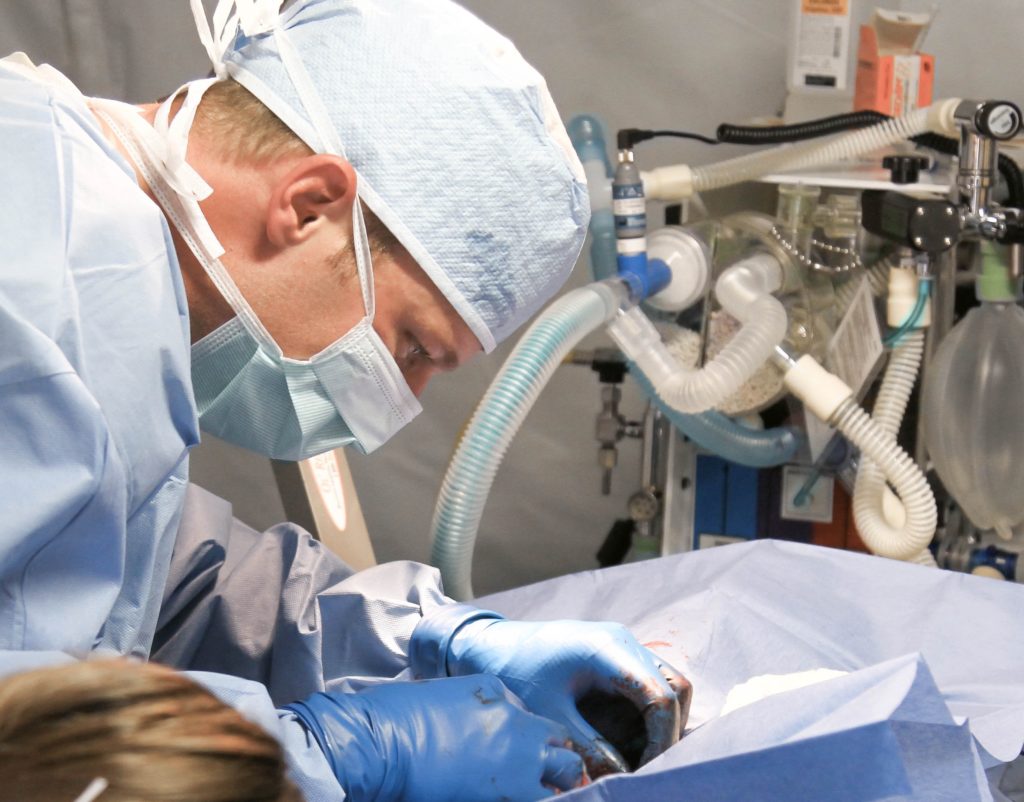Medicine and Surgery Course Details
| Teaching Language | English |
| Non-EU Seats | 10 |
| EU Seats | 15 |
| 2022 IMAT Score (Non-EU) | 44.4 |
| 2022 IMAT Score (EU) | 37.1 |
Facts About The University
| QS Ranking | 416 |
| Founded in | 1224 |
| Number of Students | 81.875 |
| Academic Staff | 5.517 |
| Status | Public |
| Fees | 156€-3500€ |
The University of Naples (Federico II) was founded in 1224 by an imperial decree of Federico II Swabia, Emperor of the Holy Roman Empire. One of the most famous students was the Roman Catholic theologian and philosopher Thomas Aquinas. Since its founding in 1224, it has been one of the oldest universities in the world. Federico II University has a tradition of promoting and supporting student associations. Its students are encouraged in the pursuit of excellence at home and abroad. Students will have the opportunity to pursue intellectual development and professional skills here. Since its inception, this esteemed institution has achieved a reputation for excellence in teaching and research.
There are 108 libraries located on the campus. At the moment, educational institution offers 160 degree programs, 48 university master’s programs, 38 research doctorates, 15 schools of specialized study, 15 postgraduate programs and the International School of Higher Education and Research Southern High School (SSM).
UNINA (Universita degli Studi Napoli Federico II) offers courses and programs that lead to recognition degrees such as bachelor, master and a doctorate in several disciplines of study. The university consists of three departments: POLI, a semi-independent institution for teaching, research and management, and thirteen faculties. Since 2016, the University of Naples has been the only generalist Italian university with a good reputation in higher education. It is among the best 200 universities in the world.
Medicine and Surgery at The University of Naples Federico II
Compared to other medical universities in Italy that teach in English, The University of Naples Federico II has the advantage of greater interaction between teachers and students. Although it is only the third university in Italy in terms of the number of enrolled students, its tremendous dimension is that it is one of the best universities in the country for excellence in research. In 2016 it was the only major Italian university with a reputation of being in the list of the 200 best universities in the world.
The faculty has driven medical education forward through the provision of diverse specializations that are inclusive to students from all walks of life. The curriculum aims to deliver a well-rounded education which cultivates critical thinking skills, scientific inquiry, and ethical practices among students. From Anesthesiology to Dermatology, Orthopedics to Psychiatry – there is an abundance of opportunities available for those seeking a comprehensive understanding of medicine and surgery. Burgeoning physicians can anticipate demanding coursework coupled with practical clinical training facilitated by competent mentors who continually challenge them throughout their educational odysseys. The Medicine and Surgery faculty at The University of Napoli Federico II boasts the production of skilled professionals epitomizing intellectual curiosity complemented by caring empathy-driven practice. The specialized curricula at The University of Naples Federico II’s Medicine And Surgery faculty prepares future healthcare leaders while promoting academic excellence alongside empathy towards the needs of patients.
Additionally, GULUNAP, an initiative that was started in 2004 aims to train doctors to meet the specific needs of local communities, launch the first call for treatment and promote preventive medicine in conjunction with therapeutic approaches. Research ranking refers to the volume and impact of the quality of the research results of the institution. The evaluation results of the institution are compared to their context to get an overview of the country and the region to which it belongs and of the institutions of the world that place it in its respective positions.
Universities like The The University of Naples Federico II play a critical role in providing access to various specializations so that aspiring healthcare professionals can develop the necessary skills required to address complex health problems holistically. The curriculum at this prestigious institution ensures hands-on practical experience under experienced faculty members assisting students gain expertise in their fields while also promoting critical thinking abilities. These efforts by The University have resulted in producing highly-skilled medical professionals who continue contributing significantly towards improving global health outcomes. Students interested in pursuing medicine or surgery as a career path then choosing The University of Naples Federico II would be an excellent decision. With its wide-ranging programs designed for cultivating future leaders coupled with skilled professors committed towards nurturing those upcoming generations.
The University of Naples Federico II is also an attractive option for non-EU candidates as it offers many non-EU places than the other medical school. Moreover, the IMAT score required for entrance is lower than at other universities. Napoli Federico II was the only Medicine and Surgery course in Italy that reserved more places for non-EU candidates than European ones. Studying in Naples brings all the benefits of the South: a warmer climate, warmer people, lower cost of living, fewer rules, and more retirement.
Course Structure at the University of Naples Federico II
First year Courses
- Bioethics
- Chemistry and Propedeuitcal Biochemistry
- Physics in Medicine
- Medical Statistics and Informatics
- Molecular and Cellular Biology
- Human Histology and Embryology
- Human Anatomy I
- Scientific English I
Second year Courses
- Human Anatomy II
- Human Biochemistry
- Scientific English I
- Human Physiology I
- Microbiology and Immunology
- Human and Medical Genetics
Third year Courses
- Human Physiology II
- General Pathology
- Medical, Surgical, and Clinical Methodology I
- Medical, Surgical, and Clinical Methodology II
- General Pathophysiology
- Hygiene and Community Medicine
- Laboratory Medicine
Fourth year Courses
- Medical Pharmacology and Toxicology I
- Medical Pharmacology and Toxicology II
- Pathological Anatomy and Histology I
- Pathological Anatomy and Histology II
- Clinical Immunology and Allergology
- Venereal Diseases and Plastic Surgery
- Endocrine and Gastrointestinal Diseases
- Respiratory and Cardiovascular Diseases
- Urological Diseases
Fifth year Courses
- Head and Neck, and Sensory Organ Diseases
- Rheumatology and Degenerative-Malformative Diseases of Locomotor System
- Imaging Diagnostics and Radiotherapy
- Forensic and Occupational Medicine
- Neurology and Psychiatry
- Infectious Diseases
- Translational Medicine
- Oncological and Hematological Diseases
Sixth year Courses
- Clinical Medicine
- Pediatrics
- General Surgery
- Gynecology and Obstetrics
- Medical and Surgical Emergencies
- Final Thesis
Its exceptional curriculum provides ample opportunities for cutting-edge research led by experienced professors and state-of-the-art facilities all paired together create an environment where students can flourish academically while gaining practical skills. In today’s fast-changing world demanding qualified personnel, universities like Unina are pivotal in molding future generations’ healthcare providers equipped with both clinical experience and academic competence essential in delivering excellent care. Overall if you’re searching for unmatched educational excellence alongside modern technology aided learning approaches delivered by committed lecturers then look no further than the Med School at the University of Naples! Graduating from such a prestigious institution confers on individuals the privilege of joining elite league of Italy ready enough to take on any challenge as they relentlessly serve humanity; making our planet more prosperous every day.
Tuition Fee at University of Naples Federico II
Tuition fees are calculated individually according to the ISEE (Equivalent Economic Status Indicator). ISEE is a criterion used to evaluate the family’s economic status of students, also used at all public universities in Italy. Therefore, annual tuition fees range from 158 € to 3500 €, depending on many factors (parents’ income, full/part-time studies and etc.).
You can look at our “Tuition Fee for Medical School in Italy” article for detailed information.
Admission Requirements |
You can look at our “Admission Requirements for Medical Schools in Italy” article for detailed information.
Student’s Life in Naples
You can look at our “Student’s Life in Napoli” article for detailed information.
Articles About Medical Schools
6 Reasons to Study Medicine in Italy
3 Practical Ways to Finance Yourself as a Medical Student in Italy
Italy is a beautiful country with lots of amazing opportunities to help finance yourself through your medical degree. Despite being one […]
How to Open a Free Bank Account as a Student in Italy
Opening a bank account in Italy is an essential step for medical students. Upon arrival, medical students may need […]






